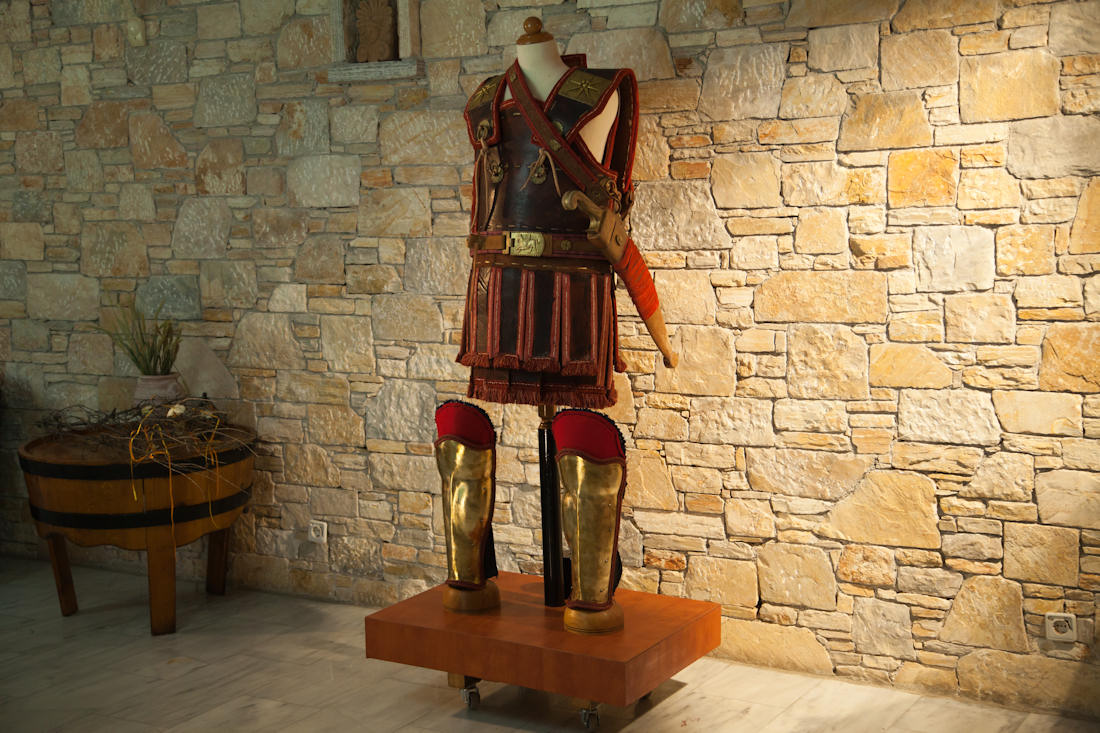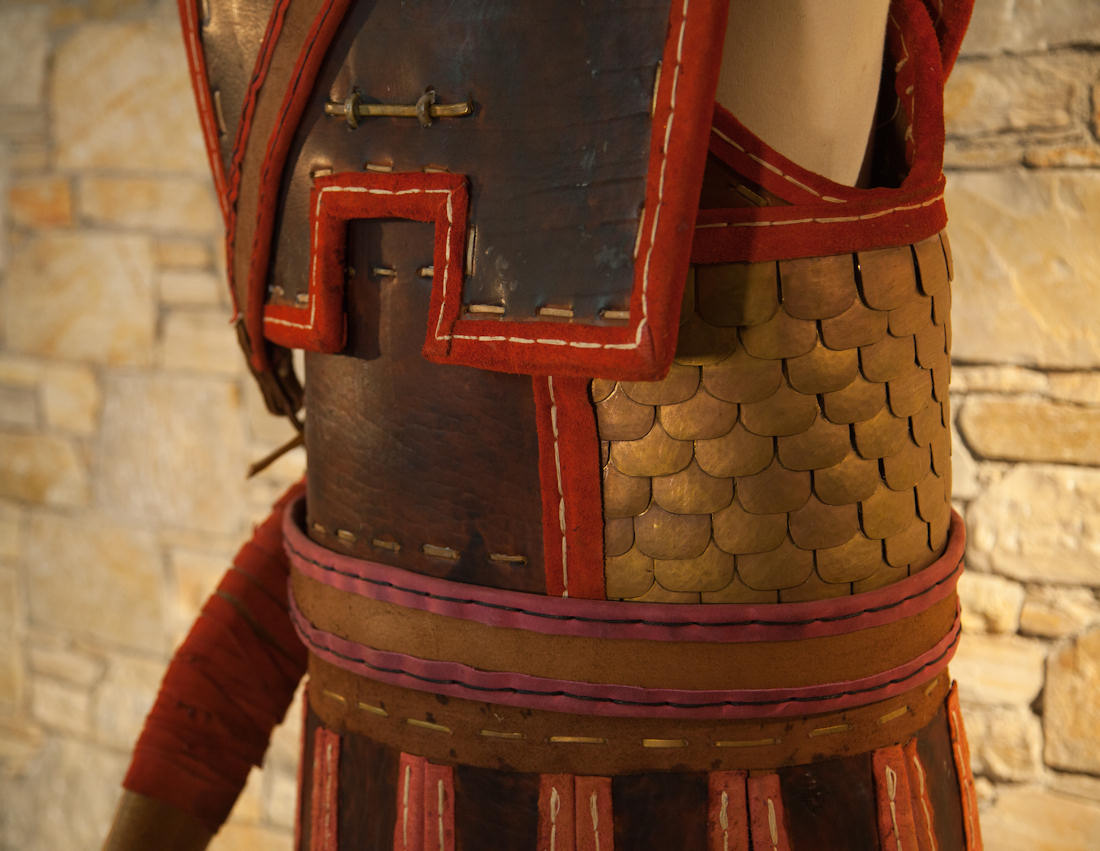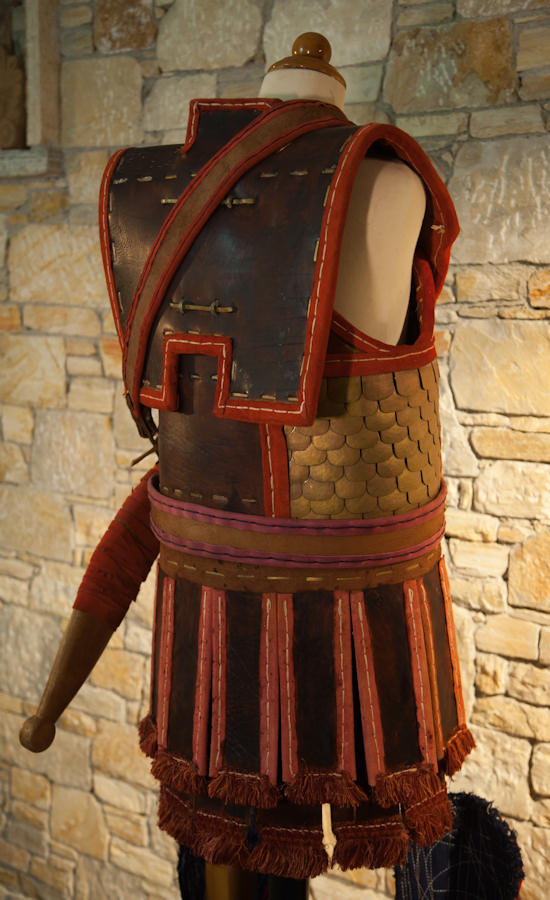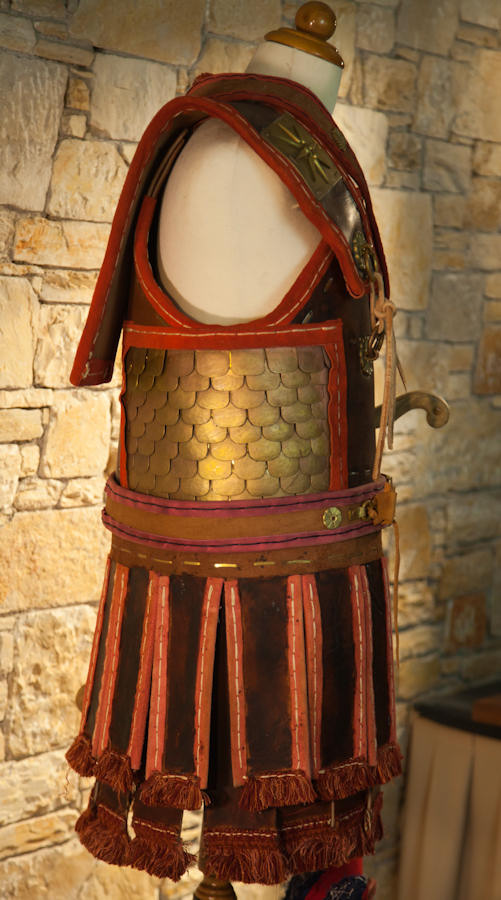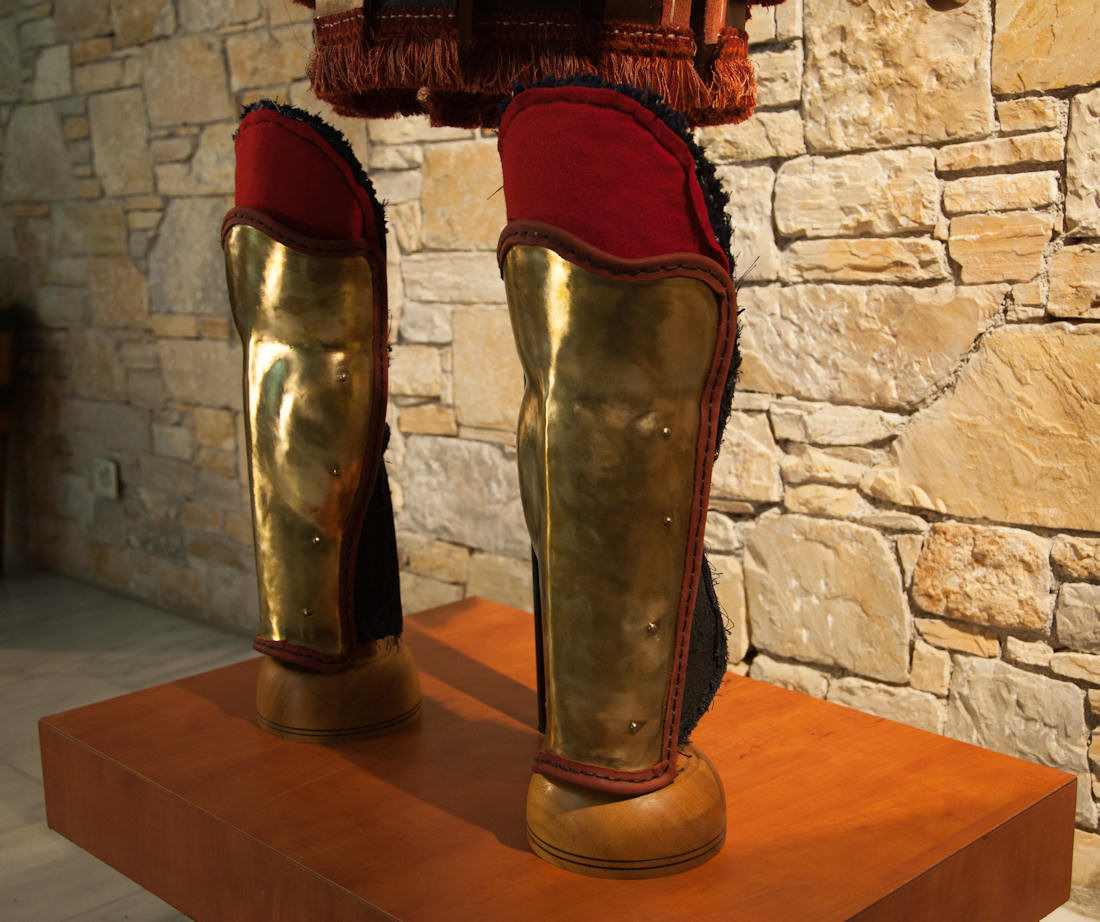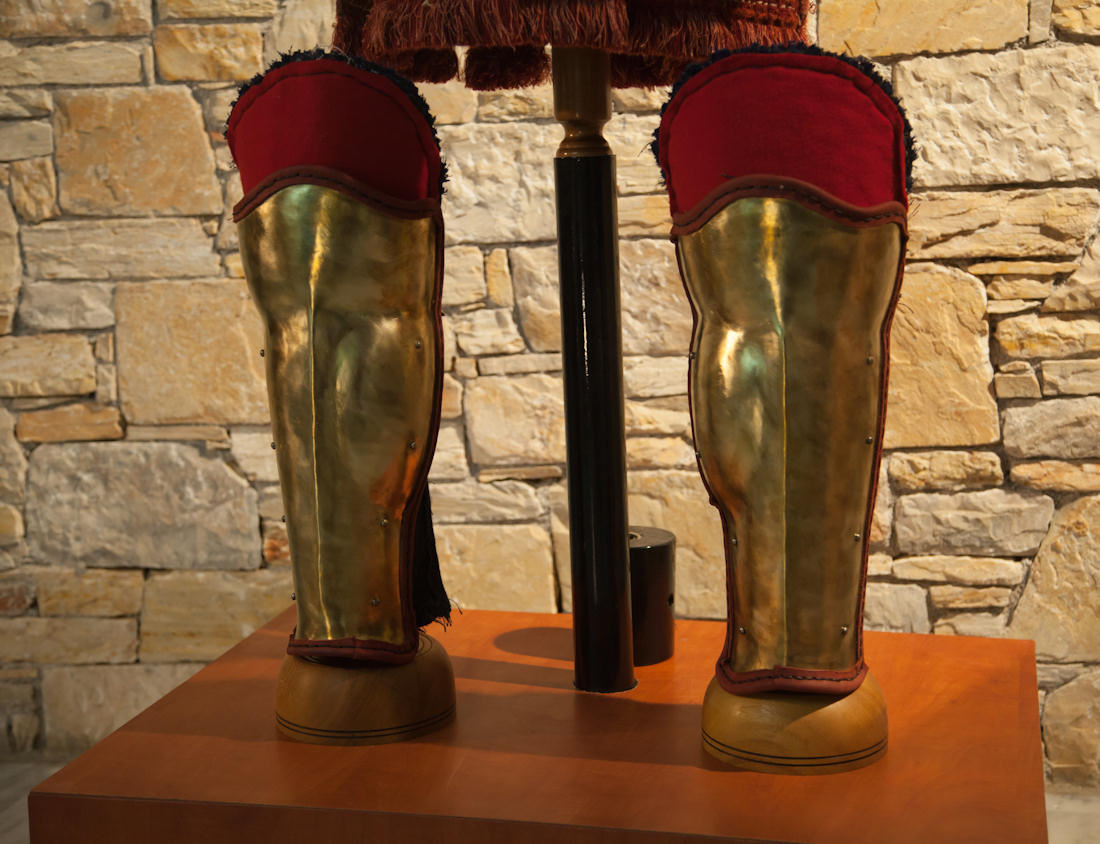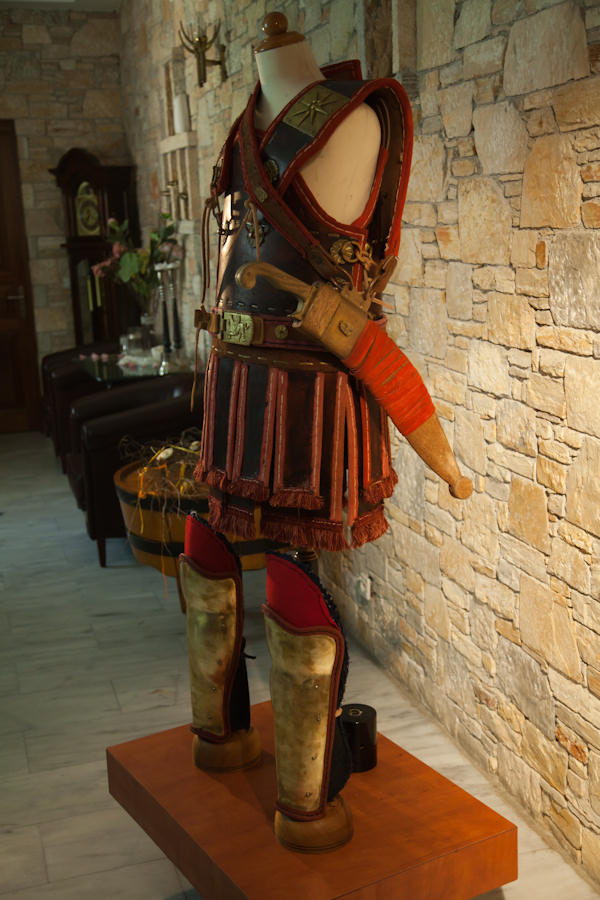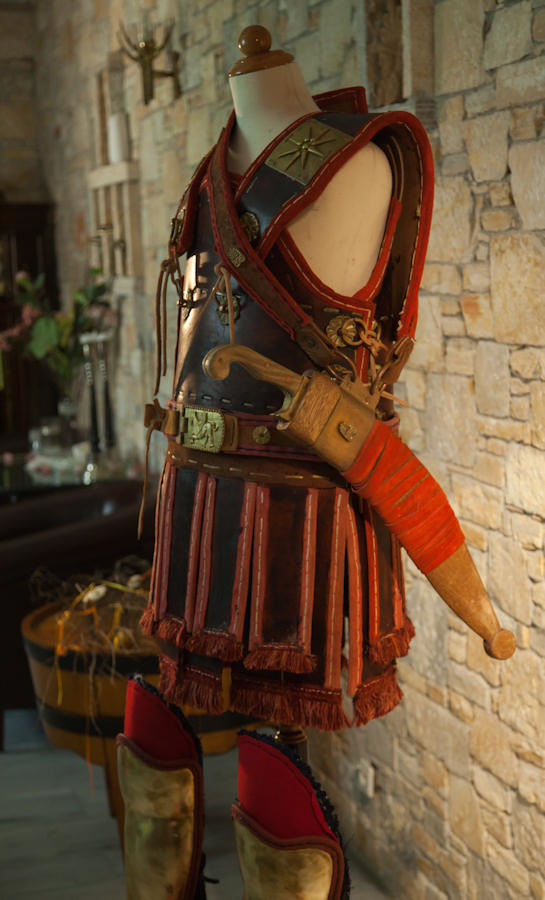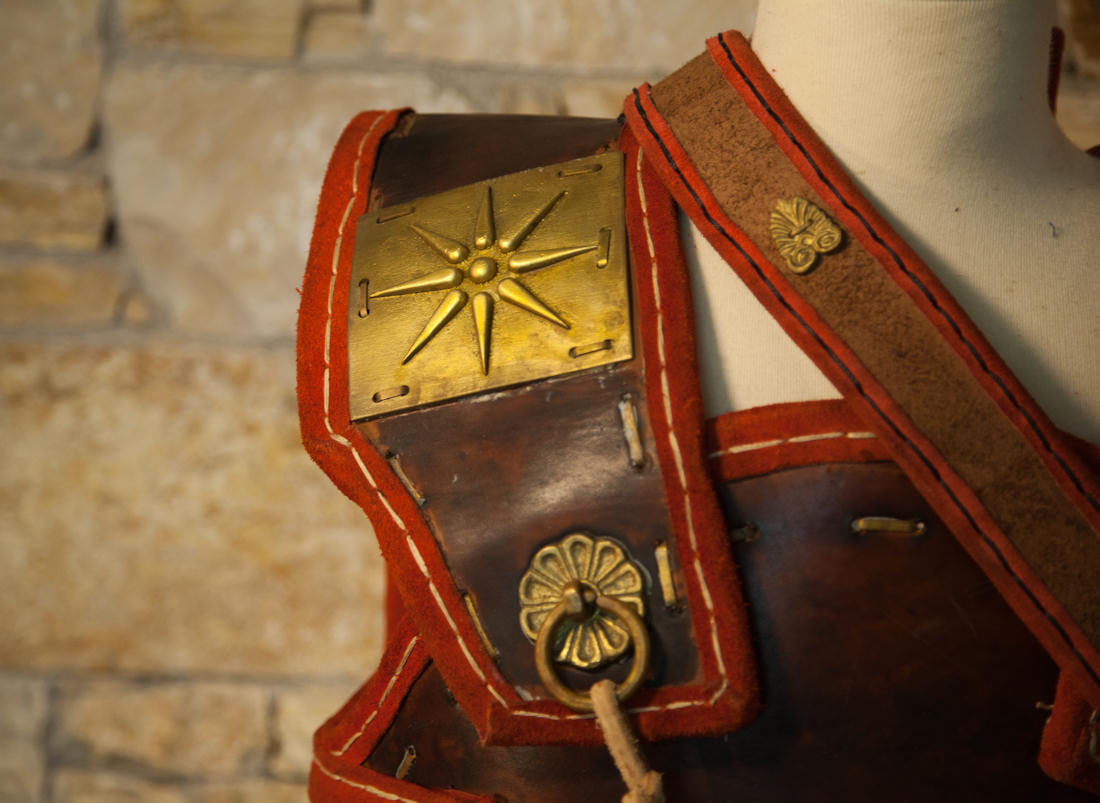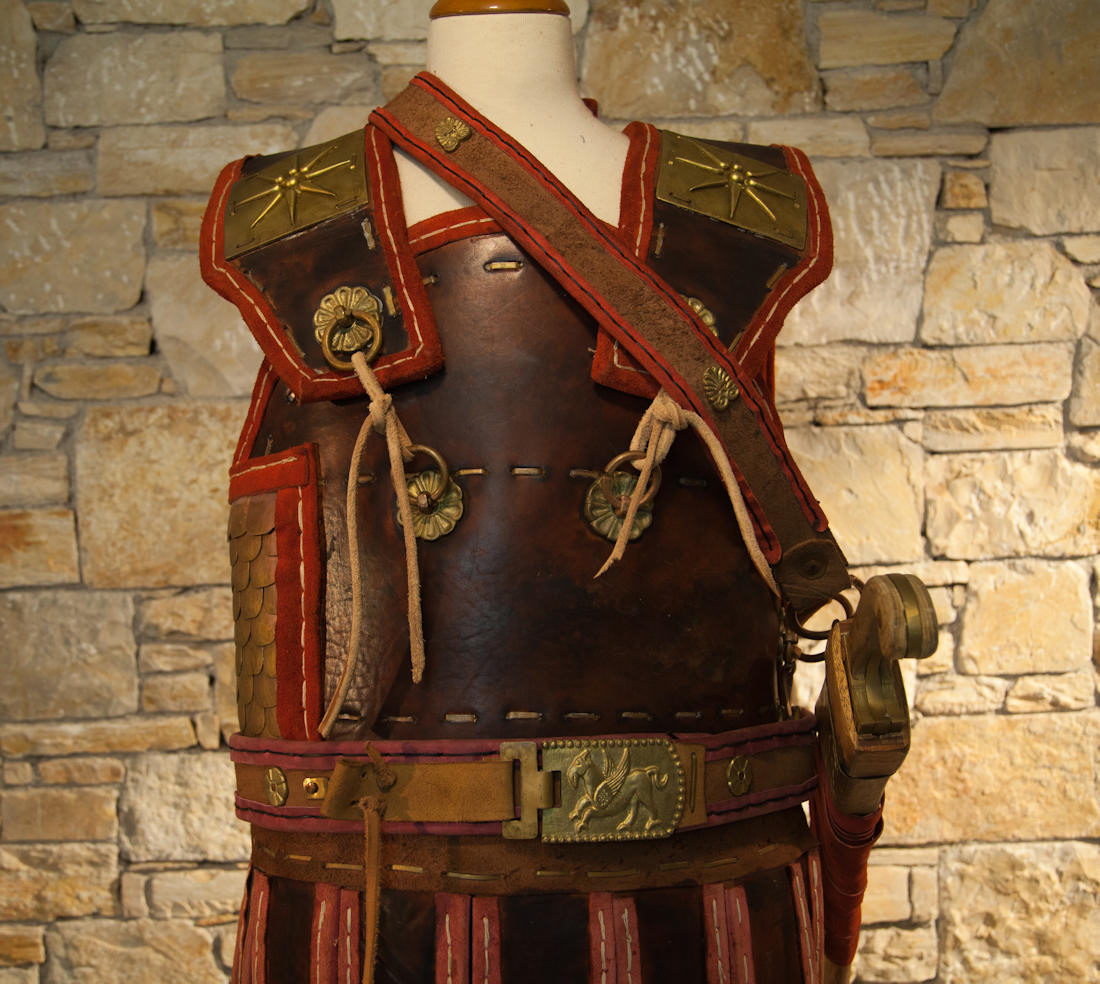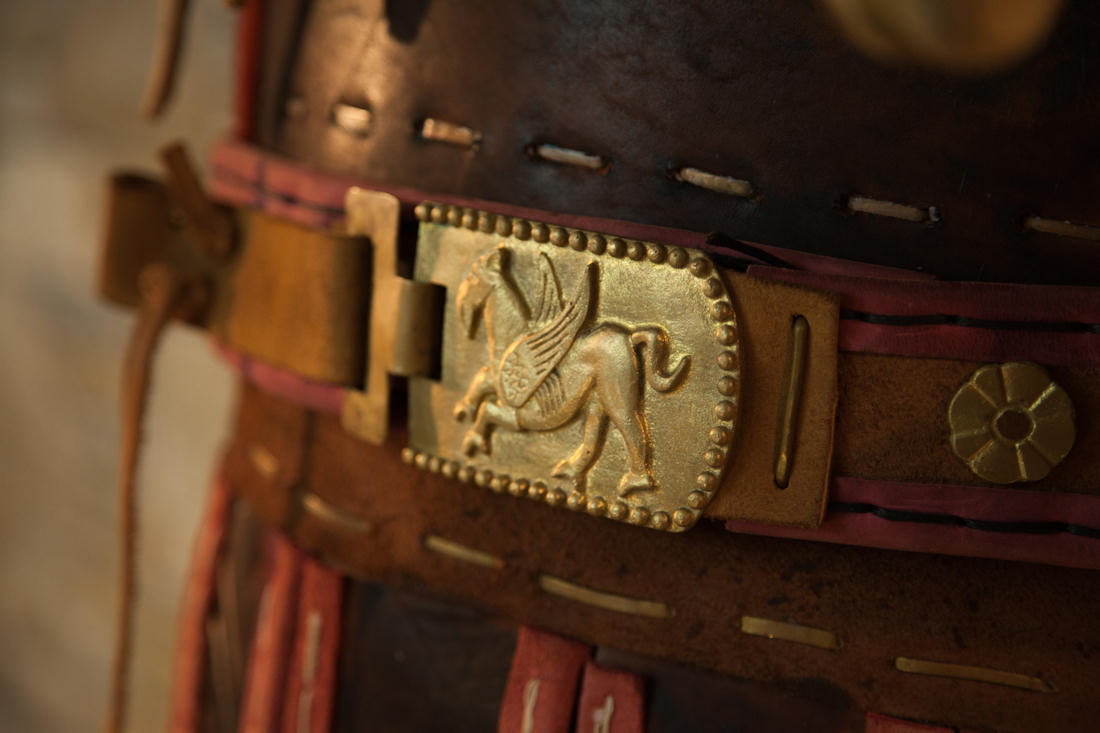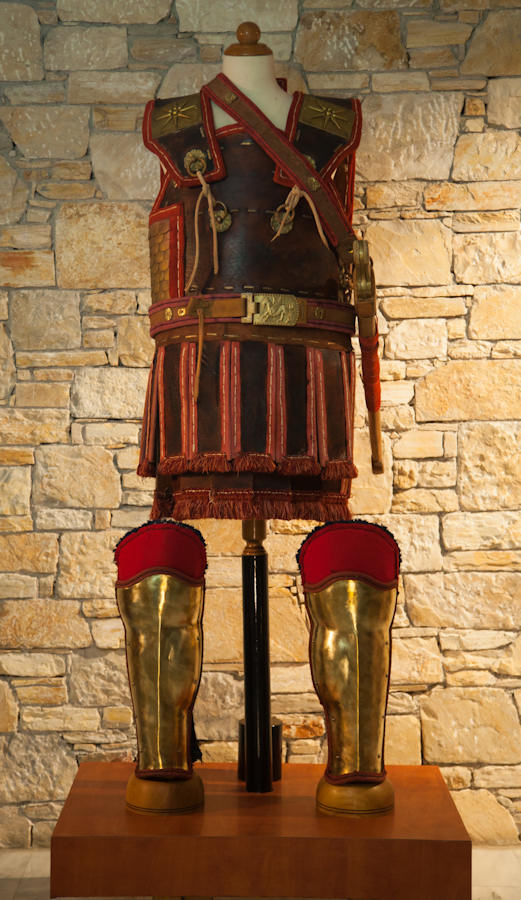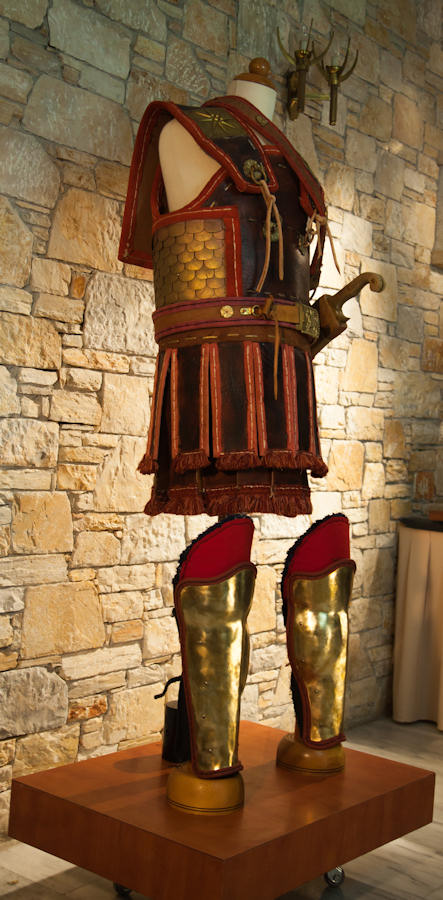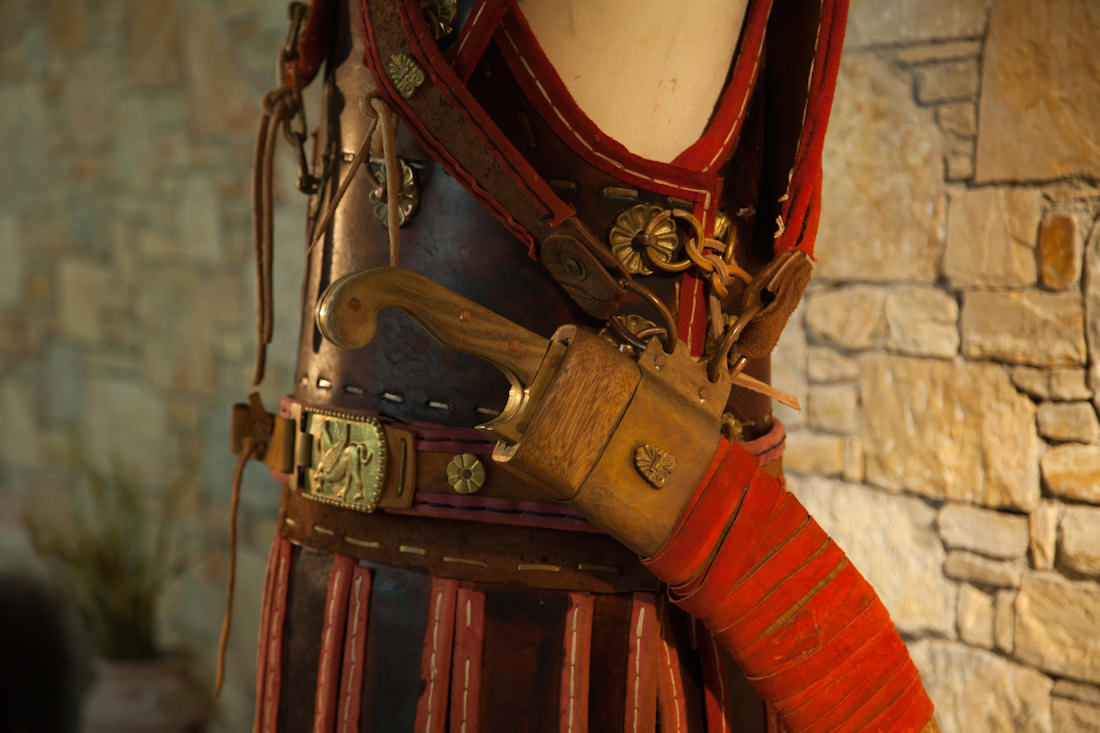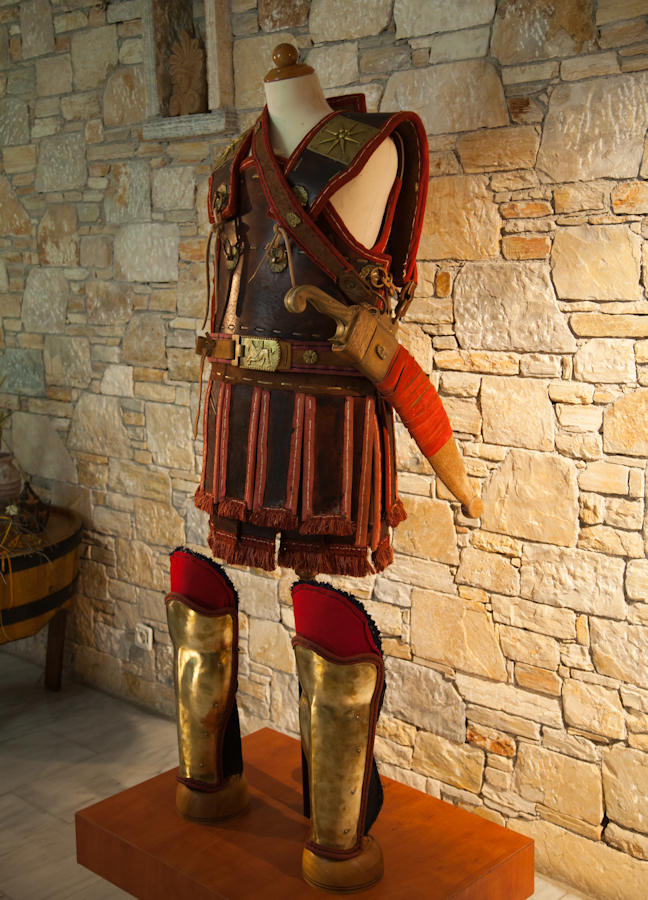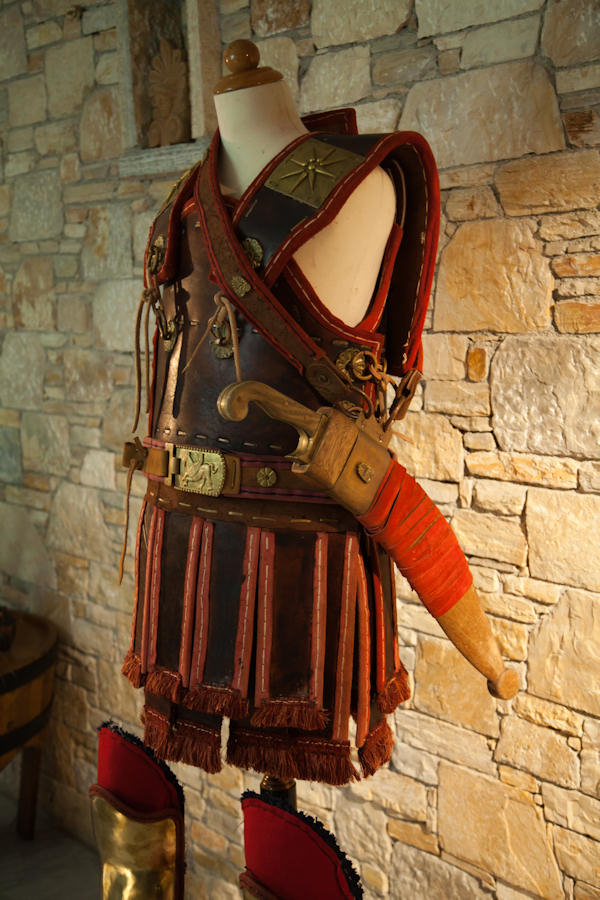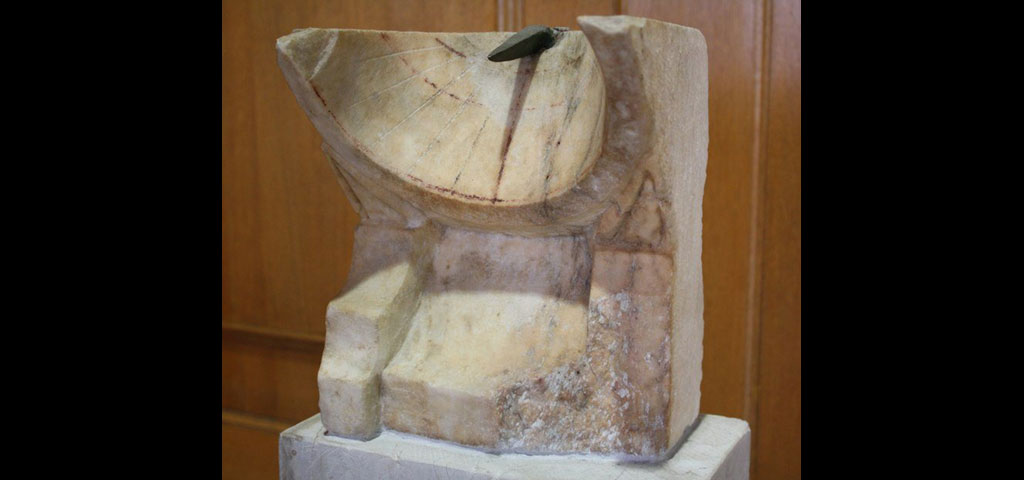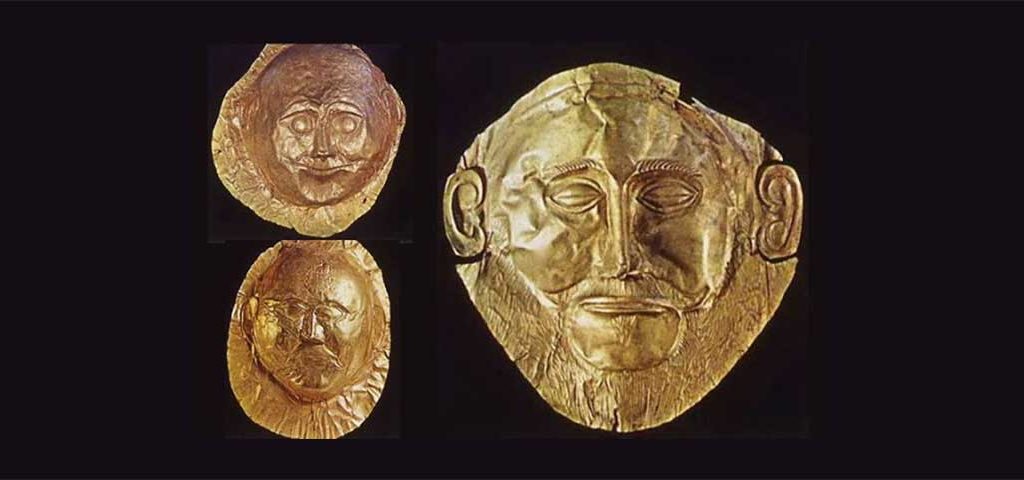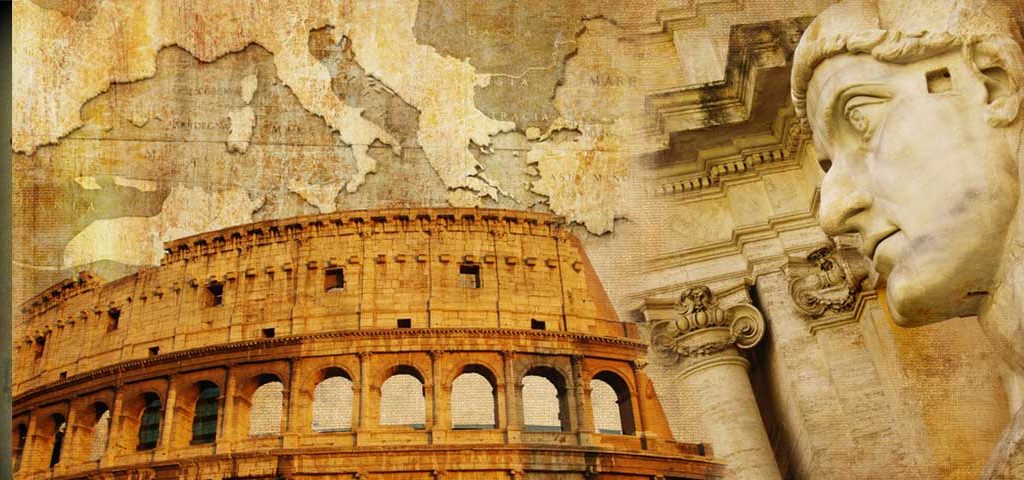Ancient Greek Armors
Heavy leather thorax of Alexandrian Period
3rd - 2nd B.C.
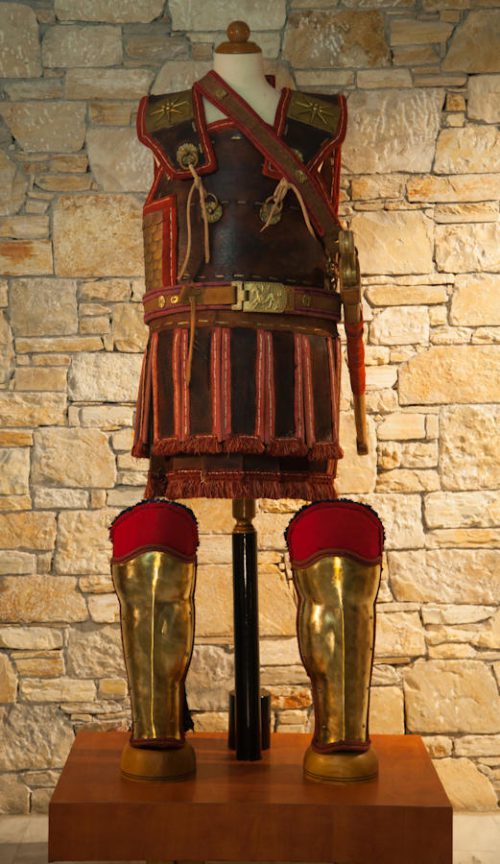
Τhe thorax has been inspired by the wall murals of Macedonian family tomb “Lyson and Kallikles” at Lefkadia region (between Mieza and Pella).
It follows the generic outline of a Linothorax torso, it being consisted by torso, pteryges (πτέρυγες) and epomides (επωμίδες) constructed exclusively from thick waxed leather. The epomides and the torso parts are being consisted by a double layer of leather stitched up together with bronze staples creating a high durable surface able to stop a variety of incoming threats e.g arrow heads etc.
The thigh area is being protected by a double layer of thick leather pteryges (long and short) which offer an efficient level of protection and mobility. The three individual major parts of the thorax are being connected with bronze staples forming a solid body.
All the endings have been covered with folded purple leather sewed by hands. The fastening mechanism includes five pairs of bronze loops with margarita-like casted bronze bases, two pairs in the breast area and tree pairs in left side of abdomen. Respectively, the right side has been covered with rectangular bronze scales creating a reinforced flexible “square” beneath the right armpit. At the frontal parts of epomides two stylize Macedonian Suns have been placed, dominant emblems of the Macedonian Kingdom. Around the waist a heavy military belt with bronze casted buckle (decorated with griffin-like mythical creature) completes the armor.
The greaves is of an open type, made of forged bronze sheets. They mimic the anatomy of the lower leg and hold on place with a fastening mechanism of loops and leather cords. A textile substratum of linen is necessary to be placed to the inner surface of the greaves in order potential wounds to be avoided.
